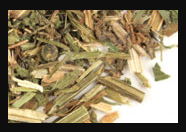Cleavers Herb Cut & Sifted, Wild Crafted
Cleavers Herb Cut & Sifted, Wild Crafted
Couldn't load pickup availability
Cleavers
Galium aparine
Overview
Discover the timeless power of nature with our Cleavers Herb, Cut & Sifted, Wild Crafted. Known affectionately by its many nicknames—Sticky Willy, Goosegrass, or even Everlasting Friendship—this herb has been cherished for centuries for its gentle yet effective benefits to the skin, urinary system, and overall wellness. Grown freely in untouched environments, this wild-crafted herb brings the best of nature’s bounty straight to your home.
Key Features & Benefits
Cleavers has a rich history of supporting clear, radiant skin. Traditionally prepared as an infusion or wash, it’s been used to soothe freckles, sunburns, and even dry conditions like eczema and psoriasis. But its benefits don’t stop at skin deep—its alterative and diuretic properties make it a go-to ally for promoting kidney and bladder health, encouraging gentle purification for the blood, and supporting a variety of challenges like edemas and cystitis.
Packed with beneficial compounds like chlorophyll, flavonoids, and trace minerals, Cleavers is a true multitasker. Whether you’re addressing minor skin irritations, promoting urinary health, or simply seeking a bit of calm and balance, Cleavers makes it easy to care for yourself naturally.
Preparation Instructions
Brew a calming cup of Cleavers tea with this simple recipe:
- Fill a pitcher with 2 cups of cool water.
- Place 2 tablespoons of dried Cleavers herb (stems and all) in a mesh tea bag.
- Steep at room temperature for 8–12 hours.
- Add your favorite sweetener and enjoy its earthy, bitter-sweet flavor!
Perfect for a refreshing iced tea or a soothing remedy at the end of a long day.
Additional Information
Did you know? Cleavers gets its name from the plant's ability to "cleave" or cling to just about anything, thanks to its tiny hooked hairs. Historically, its roasted seeds were even used as a coffee substitute! With a subtle honey-like fragrance when in bloom, Cleavers connects you to a rich tradition of herbal care that spans centuries and cultures.
Summary
Enjoy the nurturing touch of nature with Cleavers Herb, Cut & Sifted, Wild Crafted. From vibrant skin to harmonious inner balance, its wide-ranging benefits make it a staple of any natural wellness routine. Order now and rediscover the incredible power of this time-honored herb.
Your wellness story begins with Cleavers.
Precautions
As with any herbal product, consult a healthcare professional before use, particularly if you are pregnant, nursing, or taking medication.
Disclaimer: This product and its benefits have not been evaluated by the FDA and are not intended to diagnose, treat, cure, or prevent any disease. Please consult your healthcare provider before making any dietary changes.
Share


